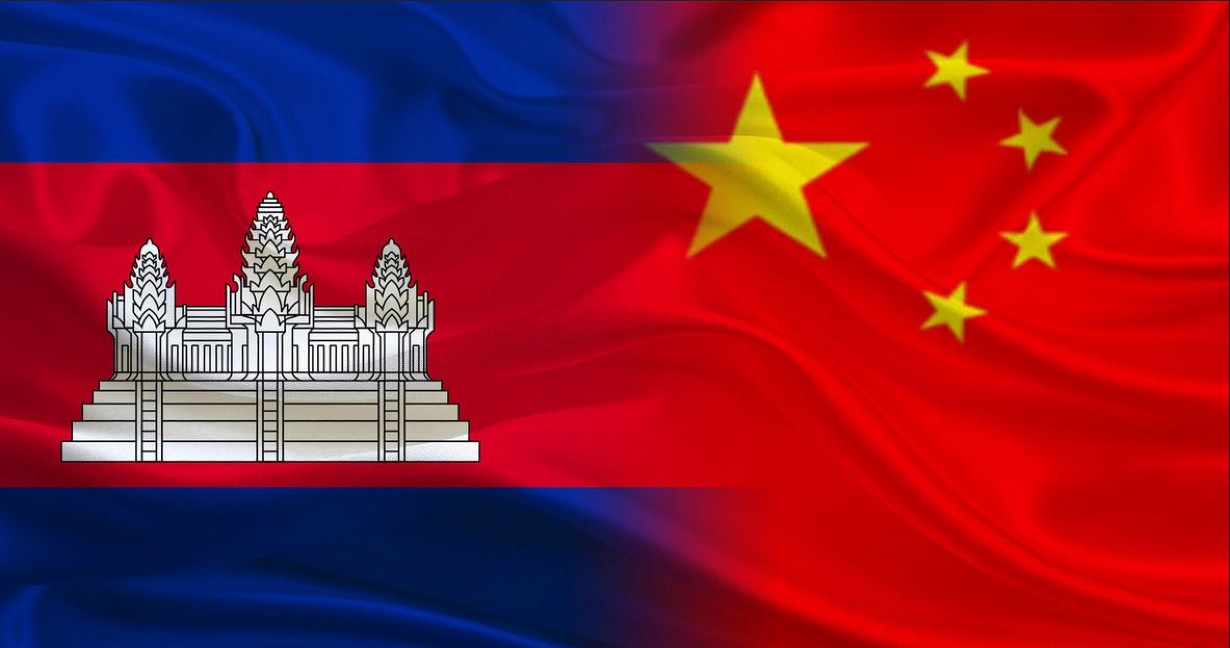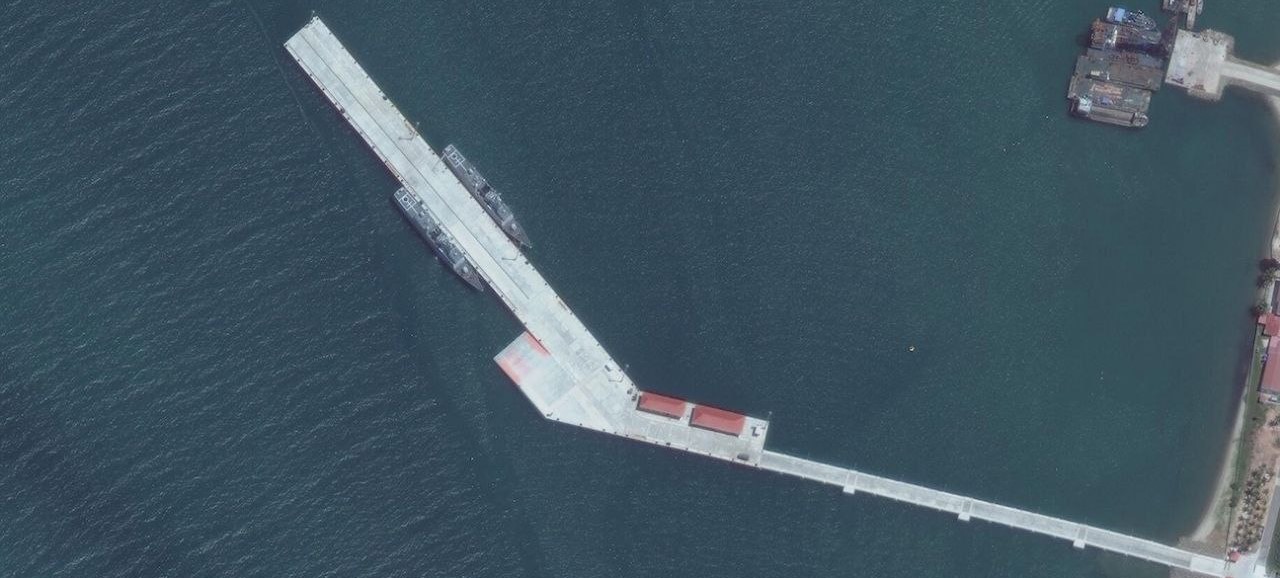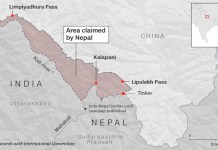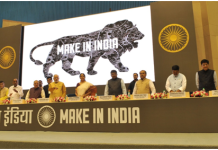Amid increasing hostility with its neighbors in the South China Sea, China seems to have found an ally that allows exclusive access to Chinese naval vessels and has pledged to support its positions on Taiwan and other contentious issues.
Chinese Foreign Minister Wang Yi arrived in Cambodia on April 21 for a three-day official visit to strengthen relations with Beijing’s closest Southeast Asian partner. The timing of the visit is significant as it comes when the rift between China and other Southeast Asian countries, especially the Philippines and Vietnam, is widening.
In a meeting with Cambodian Foreign Minister Hun Manet, Wang promised ‘phenomenal’ support to Phnom Penh and assured Beijing would keep funding infrastructure upgrades in Cambodia and advance cooperation on manufacturing capacity.
In return, Hun Manet said that Phnom Penh had pursued a “consistent” China policy and assured that his nation would fully back China’s stance on Taiwan, Hong Kong, and Xinjiang. Hun Manet further stated that Phnom Penh would continue to take part in China’s Belt and Road Initiative.
As per reports in Chinese state media, Cambodia conveyed that it supported all of China’s attempts to achieve national reunification, rejected any attempt to use the Taiwan dispute as a pretext for meddling in domestic affairs in China, and would not establish formal relations with Taiwan.
The two committed to bolster defense cooperation, carry out joint drills and training, advance cooperation in logistics and medical services, personnel training, and mine clearance, and start joint efforts to combat transnational crimes like drug trafficking, online gambling, and telecom fraud.
Despite the escalating conflict in the South China Sea region, Hun Manet’s China-friendly policies have prevailed. China continues to have closer relations with Cambodia than any other ASEAN member nation (the Association of Southeast Asian Nations comprises a political and economic union of 10 states in Southeast Asia). There are no geographical conflicts between the two, and Phnom Penh is heavily dependent on Chinese investment.
当地时间2024年4月22日,中共中央政治局委员、外交部长王毅在金边会见柬埔寨参议院主席洪森。https://t.co/v6kpgy8pdz pic.twitter.com/ma1iL7rUPP
— Chinese Mission to UN (@Chinamission2un) April 23, 2024
The Chinese state-owned publication Global Times reported that China and Cambodia reaffirmed their commitment to advance the negotiations for an early conclusion of the Code of Conduct in the South China Sea and to fully and effectively implement the Declaration on the Conduct of Parties in the South China Sea. However, there was no mention of the South China Sea in China’s official statement.
The visit coincides with the joint military drills launched by the Philippines and its ally, the United States, in the South China Sea in the backdrop of escalating tensions and frequent confrontations between the Chinese and Filipino Coast Guard forces in disputed territories like the Second Thomas Shoal.
🇨🇳🇺🇸🇵🇭 Increased Tensions in the South China Sea
Yesterday, the multinational exercise Balikatan-2024 began in the Asia-Pacific, involving the US, Philippines, Australia, and France.
▪️The drills will take place in several areas, including the Palawan and Luzon islands, as well… pic.twitter.com/CEEwb5TBPS
— Rybar Force (@rybar_force) April 23, 2024
While the two sides – China and the Philippines — have been embroiled in territorial disputes for over a decade, their relationship has seen a free fall in the last year, with Beijing becoming more assertive and belligerent. This has essentially pushed the Philippines further into the US camp, with both sides asserting their ironclad relationship.
While Beijing opposes this partnership, it has continued to court Cambodia and expand its influence in the state, disenchanting the US.
China is Cambodia’s greatest benefactor and ally and has a significant impact on the country’s economy. Many Chinese-funded projects serve as examples of this bonhomie, including private initiatives like hotels, casinos, and real estate development, as well as infrastructure projects like highways and airports.
However, Cambodia’s support for China is not just rhetorical. It extends far and beyond, as reflected in China’s assistance in building Cambodia’s Ream Naval base, which has led to suspicion that the country could be geared to host Chinese naval vessels and operate as a Chinese vassal in the region.

Cambodia’s Ream Naval Base In Limelight Again
The reaffirming of ties between China and Cambodia has brought attention back to the Ream Naval Base, which has emerged as a symbol of this relationship. American officials and analysts have warned that establishing a Chinese naval facility in Cambodia was an essential component of Beijing’s plan to build a network of military outposts worldwide.
A set of satellite images published earlier this year revealed that China has made progress in building the Ream Naval Base in Cambodia since 2020, with several structures now nearing completion.
Although the United States has expressed alarm and caution over China’s purported building of the Ream Naval Base as its first military installation in the Indo-Pacific, Cambodia has denied any intention to allow the People’s Liberation Army to enter the country.
Chinese warships dock at Cambodia’s Ream naval base.
Several Chinese warships have arrived at Ream naval base in Cambodia “in preparation for training” the Cambodian Navy.
One of the most striking features is the new deep-draft pier that could accommodate aircraft carriers… pic.twitter.com/SWgXnXhKlz
— Clash Report (@clashreport) December 5, 2023
However, that seems to be changing. A US think tank, the Asia Maritime Transparency Initiative (AMTI) at the Centre for Strategic and International Studies (CSIS), reported that two Chinese navy ships have spent more than four months at the port. The report was based on the think tank’s analysis of the latest satellite images.
Since December 3, two Chinese corvettes have been a “consistent presence” at the Ream Naval Port in southern Cambodia, which is funded by China. The two PLA Navy ships, the only two to visit the pier since it opened, were parked at the facility for 85 of 91 days, or 93% of the time since they first arrived at the port. According to the report, the pier was only empty for two short periods: January 15-18 and March 29-30.
When the Chinese vessels first visited the base in December last year, Cambodian Defense Minister Tea Seiha clarified that it was a routine visit. However, questions have been raised about the Cambodian version of “routine” with the extended docking of Chinese vessels.

The Cambodian navy has traditionally used the strategically positioned Ream facility, close to the entrance of the Gulf of Thailand, to gain access to the South China Sea and other regions. This has essentially triggered concerns in the West that the expansion of the base with Chinese support could result in the base eventually becoming a Chinese Navy outpost.
Concerns about a purportedly secret agreement between Beijing and Phnom Penh to allow a permanent Chinese military presence at Ream have persisted for years, and the report raised the question of “whether that presence has now, in fact, been established” in light of the Chinese Navy’s “extended and exclusive” access to the pier.
The Southeast Asian country, however, maintains that such allegations were part of a “campaign to slander Cambodia by foreigners and politicians,” and Phnom Penh refuted the claimed secret pact.
Concluding the report, the US think tank said, “Ultimately, the degree of China’s access to Ream will be borne out over the coming months and years – and will be seen in satellite imagery. At some point, the two [PLA Navy] corvettes that have been at Ream since December will leave.”
“Whether they are replaced with other Chinese ships, how long those ships stay, and whether other navies are afforded the same opportunities will all speak volumes about the true nature of the relationship between China’s Navy and Ream.”
- Contact the author at sakshi.tiwari9555 (at) gmail.com
- Follow EurAsian Times on Google News





